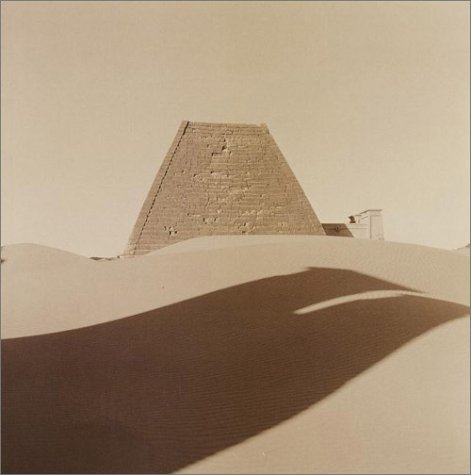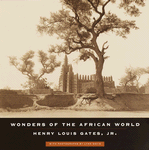|

SUDAN -- The uncapped pyramid of Natakamani, King of Kush in the early first century AD, Meroë, North Cemetery.
The funny thing about this place, Meroë, was that in some way I took the whole Africa project because of these pictures. I had seen pictures of Meroë when I was in Egypt in '89, and I kept trying to think of a way to get there in person. It was very hard to get there then because the country was in civil war, and even in the news this morning now there's continuing starvation in the north and south. When I was approached about this project, and I discovered that Meroë was one of the countries and one of the sites that I would be required to travel to, I just said absolutely yes.
Getting to Meroë is not easy. You fly out to Khartoum, where there is this guy, George. He's like Sidney Greenstreet in Casablanca. Everybody that goes through there has to go check in with him, and then he makes all the arrangements. He's got this old hotel which exchanges money, and he knows where everything is.
You can get to Meroë in about three hours by car from Khartoum. I camped out for two days on the desert not far from these pyramids. There are no tourists there. I believe that in the fifteenth century, an Italian came looking for treasure and he blew off the top of every single pyramid with explosives. I think there are a few photographs in the book of pyramids at Meroë that have the full points on them; those were rebuilt, but the tops of most of them were not rebuilt. It's a spectacular place with the desert sands that are really blowing, as opposed to Egypt, which has more of a scruff desert. All the formations are constantly changing. It's a very sensual landscape and actually much bigger that it looks. The thing is to get out there by dawn, and spend the time wandering, trying not to get any footprints that might find themselves in a picture. There was no one there when I arrived and I think no one had been at the site for many months. There are only a few locals nearby, and yet, I would wake up in the morning, and about 35 people would be out there in front of my little tiny tent with their wares. They have nothing to sell, just small scraps of jewelry, but I was the only person who had been there for months so they all came from the nearby area.
I worked two days there, morning and afternoon until dark. This photo was taken in the morning light, light from the east -- that shadow was cast by a pyramid that looks to be near, but when I was standing there, it seemed quite far away.
I wear contacts. My eyes were almost bleeding the whole time I was in Africa, and it was intense at this site. The sand gets into your mouth, into your eyes.
I like to go 360 degrees around a site that I'm photographing -- and try to look for where the light is going to be, what the situation is all around. Buildings are like people, they often have their best angles. I have to find it in the time allotted. The sunshine shines all the time in the Sudan, so the issue isn't clouds or rain or storms but there are sandstorms. The first day I got there it was sort of blowing, but when I took this, on the second day, it had calmed down a bit. Can you see the rivulets in the photo on the sand in the shadow? That means that things were settled, that the air was pretty calm.
Once you transfer these things to a photographs they tend to have a kind of a flatness and solidity, when, in fact, in the moment the photograph was taken, you are walking in sand up to your knees, trying to get through it to get the best angle, and then the light changes, and you're running over there for what seems to be a better shot. The pictures look very contained and structured but taking them, you're kind of wild. I have photographed most of the pyramids of Egypt, but this was one of my great experiences, a site like this, so many possibilities, a site that not that many people have been to.






Photographs (c) 1999 by Lynn Davis
|




